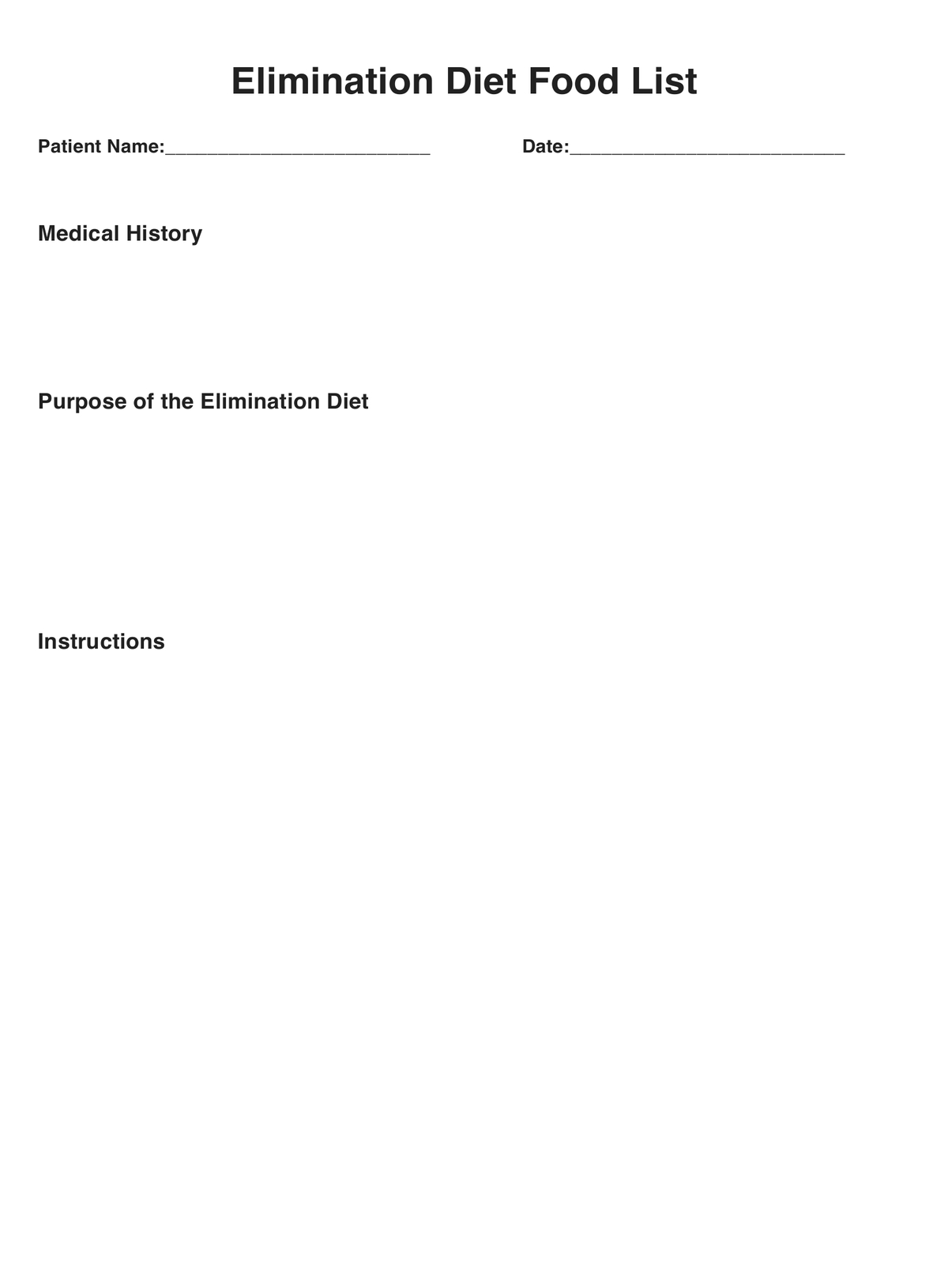Elimination Diet Food Lists are helpful because they assist in identifying and managing food sensitivities and allergies. They guide individuals in systematically eliminating potential trigger foods and reintroducing them to assess their impact on health.

Elimination Diet Food
Access an Elimination Diet Food List for identifying food sensitivities and allergies. Download our comprehensive PDF guide for a healthier you.
Elimination Diet Food Template
Commonly asked questions
These lists are used when individuals experience unexplained symptoms like digestive issues, skin problems, migraines, or allergies. Healthcare practitioners employ them to diagnose and manage food-related health concerns effectively.
They are used by eliminating specific foods that trigger reactions and maintaining a detailed food diary to track symptoms. Gradual reintroduction of eliminated foods helps identify triggers. Healthcare professionals guide throughout the process.
EHR and practice management software
Get started for free
*No credit card required
Free
$0/usd
Unlimited clients
Telehealth
1GB of storage
Client portal text
Automated billing and online payments











